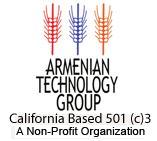
Armenia’s livestock industry was hit hard by the economic crisis that has struck the newly independent republic. Under Soviet rule, Armenia received most of its feed grain and hay by rail from other Soviet republics. Since 1989, however, neighboring Azerbaijan has imposed a transportation blockade against Armenia in its effort to defeat the self-determination struggle of Armenians in Mountainous Karabagh. The Azerbaijani blockade, combined with the breakdown of trade ties among former Soviet republics, has decimated Armenia’s stock of cattle, pigs, and sheep.
In the winters of 1991-92 and 1992-93, Armenian farmers were forced to slaughter thousands of their animals. Armenia’s lack of energy idled much of the country’s agricultural equipment, such as tractors, harvesters, milking machines, and refrigerated storage facilities.
At the same time, Armenia underwent the most far-reaching program of agricultural privatization in the former Soviet Union. During the first two winters of Armenia’s independence, most individual farmers, often with a single cow or a few pigs, found the means to feed their animals.
Stopping the spread of disease
ATG has worked closely with Armenian farmers and agricultural specialists to help restore the republic’s livestock industry. In 1995, ATG teamed up with the University of California at Davis to familiarize veterinarians from Armenia and Georgia with the latest research and techniques in controlling animal diseases.
In addition to its implications for agricultural, veterinary medicine is critical for human health. More than 200 diseases, including tuberculosis, anthrax, and rabies, may be transmitted from animals to humans. The break-up of the Soviet Union has injected a political dimension into the challenge of epidemiology. The diseases that afflict animals in Armenia are the same throughout the Transcaucasus region, and yet there has been little coordination among neighboring countries. The participation of veterinarians from both Armenia and Georgia in the UC-Davis program promises to foster cooperation between the two countries in the field of agriculture.
While in California, the Armenian and Georgian veterinarians were introduced to the state’s Veterinary Diagnostic Laboratory System. The system, headquartered at UC-Davis and supported by five regional labs, is staffed with veterinarians trained to protect farm animals against disease.
The Armenian and Georgian veterinarians also compared notes with Dr. Jack Morse, leader of a 13-person veterinary practice in Turlock, California, and Dr. Robert Bushnell, veterinary extension specialist for UC-Davis. Both men serve on ATG’s board of directors and have worked as technical advisors for the organization.
Dr. Arthur Hazarabedian, the founder of ATG and himself a veterinarian, envisioned a network of laboratories similar to the California system for Armenia. With support from both U.S. and Armenian officials, he spearheaded efforts to establish a central diagnostic laboratory in Armenia to serve the entire South Caucasus region. Hazarabedian and Dr. Bennie Osburn, associate dean of the UC-Davis School of Veterinary Medicine, were responsible for organizing the visit of the Armenian and Georgian veterinarians. Funding was provided by the U.S. Agency for International Development.
New varieties of alfalfa introduced
The shortfall in animal feed following the Soviet collapse decimated Armenia’s livestock herds. Meat and dairy production has plummeted. In response, ATG has tested new varieties of alfalfa in Armenia’s highland regions. Yields have increased by as much as four times in some areas. On top of providing high-quality forage, alfalfa enriches farmland by restoring nitrogen to the soil. In the spring of 1996, ATG planted more than 10,000 acres with specially selected varieties of alfalfa.

Follow Us